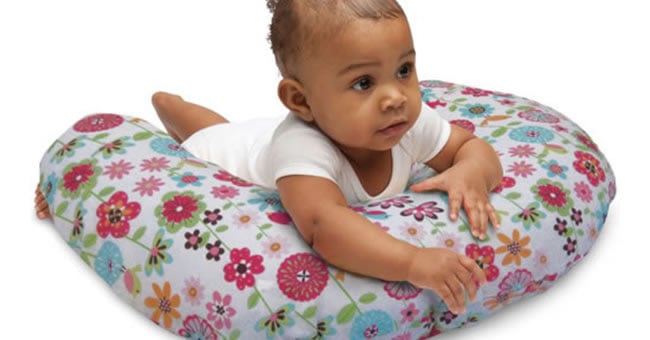
Tummy time is essential for young infants because it encourages overall muscle development, especially in the neck and upper-back muscles. It helps children gain the physical skills they need to be able to roll over on their back, sit up, and eventually crawl and walk. As Steve Sanders, EdD, states in his book Encouraging Physical Activity in Infants, tummy-time activities should begin at six weeks of age. "Start gradually with a few minutes at a time and work up to ten to fifteen minutes two or three times each day. By about three months of age, the baby should get at least ninety minutes of tummy time each day," instructs Sanders.
Here are a few other tips from Sanders to keep in mind as you start tummy time with infants:
- Do tummy time when an infant is alert and happy, not when he or she is fussy or not feeling well.
- Do not do tummy time right after feeding. The pressure on the infant's stomach may cause him or her to spit up.
- If the infant falls asleep during tummy time, be sure to place the infant on his or her back to continue sleeping.
Providing a Supportive Touch
In Encouraging Physical Activity in Infants, Sanders notes that some tummy-time activities incorporate a parent's or caregiver's touch, including these two activities:
- Lie down on the floor and place the infant on your chest so you and the infant are face to face. Have fun making faces and talking with the infant, but be sure that both of your hands are firmly around his or her midsection.
- Lay the baby tummy down on a large exercise ball. Slowly roll the infant forward and backward and then side to side. Hold the baby with both hands around his or her hips and lower back. Make sure you have a good grip, especially when you begin moving the ball faster.
Interacting with Toys
Many other tummy-time activities encourage infants to move by incorporating their toys. Here are two example activities Sanders provides in his book:
- Place the infant's favorite toy or rattle in front of him or her on the floor so that the infant will raise his or her head to look at the toy.
- Place toys around the baby so the infant will have to turn his or her head and stretch the neck muscles to reach for a toy. This activity helps develop the muscles used to roll over and crawl.
Be sure to browse our selection of pillows and mats that are perfect for tummy-time activities. We also have a variety of cribs, rattles, and other great materials for infant and toddlers available in the Infant and Toddler Care section of our website.
